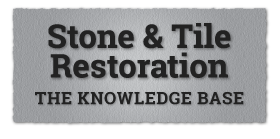What could be causing the musty smell in my brand new limestone laundry room?
Estimated Reading Time: 2 MinutesQ. We are building a new house in South Louisiana. We have a 4-inch concrete slab on the ground. Because we are in a flood zone, we had to build up. So, we have concrete piers and wooden beams that our house actually sits on. We then have 1 1/4" thick OSB plywood for the subfloor. My tile guy prepped the floor by sanding and installed a polyethylene membrane roll with an all-set white modified thinset right on top of the plywood subfloor. After that dried for a few hours, he installed a honed limestone tile. Now that everything is grouted, it smells like musty cement in the laundry room. What could be causing this smell? It was installed three days ago.
A. There are several issues with your installation. There is only one layer of plywood, but there should be two layers. OSB plywood does not handle moisture well. We were unable to determine from the plywood product info you provided whether this is exterior-grade plywood. Unmodified (not modified) thinset should have been used under the stone.
There may be mold growing under the house, since the enclosed house is cooled and the underside is not, and this causes condensation in the installation. Even though it is a new installation, mold can start forming right away. The wood serves as an organic source for the mold to grow, and you live in a humid area. Our suggestion is to have moisture and mold tests done. A stone inspector can do this for you, or you can do it yourself by purchasing a mold test kit at a home supply store and purchasing a moisture meter online. Closely follow the manufacturer's instructions.
It is possible that a destructive test may be necessary to determine the cause of the odor. This would involve removing one or more tiles.
It is also possible the slab or tile installation hasn’t cured properly and is causing the smell. If the moisture/mold tests are positive, the next step is to figure out where the mold is growing and/or the source of the moisture, just in case there is a problem in the walls or with the HVAC system. This should be ruled out before destructive testing.
Sorry that there is no easy answer to your question. Feel free to reach out if you need further assistance.

